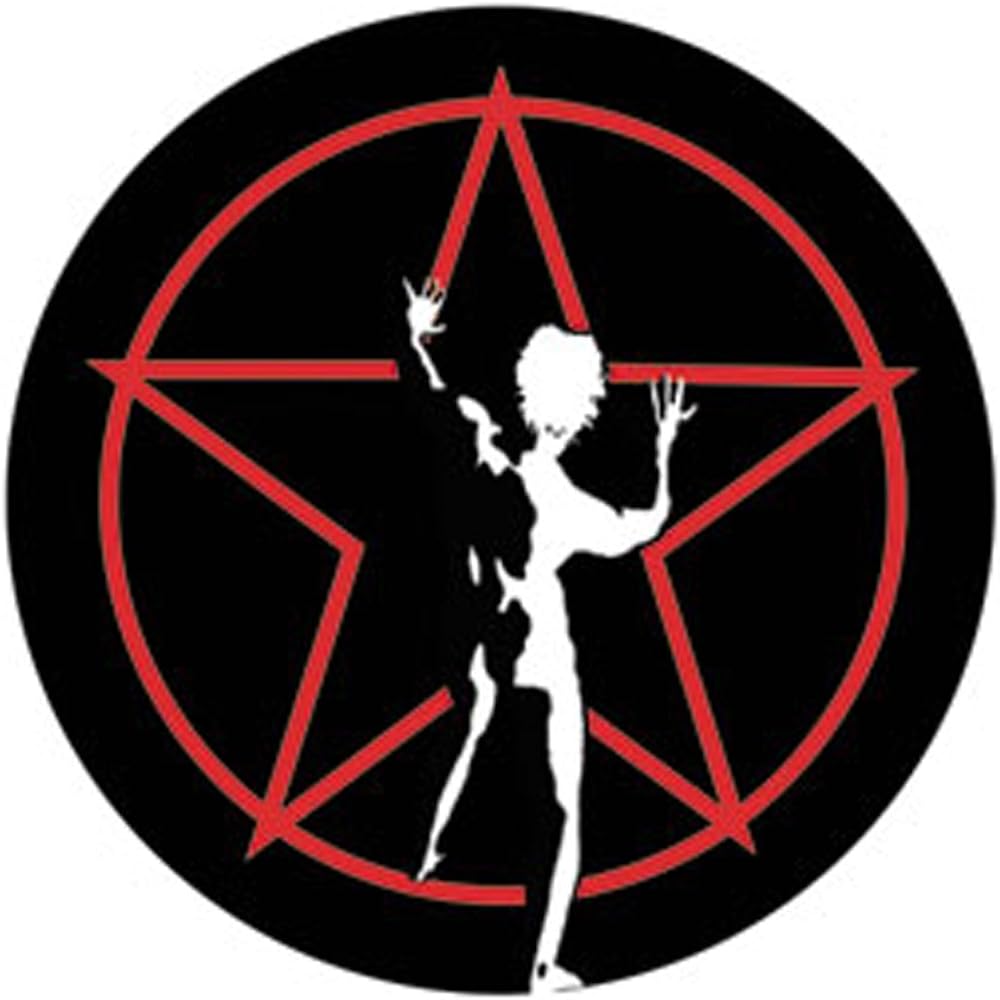Rich is right, since this is the date format that sorts correctly in filenames.
And it is easily extensible to YYYY-MM-DDThh:mm:ss to include the time of day
Are you an obsidian user?
Haha yep, you caught me. I’m a fan of the unique note feature
I’ve never met a fellow Templatr in the wild lol
My daily note broke and my life fell apart for a minute.
Have you also spent months building your Data Capture Workflow mermaid.js? 😅😬
Not quite months, but definitely weeks 😂 Obsidian can be such a rabbit hole. If I tweak that last template one more time, then I’ll finally be done, I swear!
So I’m like 80% done with my setup. Mostly focused on routine and habit templates, homepage wiki for pkm etc… between the plugins and css, no matter which device I’m on, it’s the slowest app I’ve ever used. This is why I pushed my old setup and started over clean with more knowledge. I don’t know how to get the customization I want without insane unusable lag
I feel called out and I’m hiding in the bushes reading comments.
It’s called feeling seen and finding you’re not alone. Do you type "# " while screen sharing in work apps to no avail and the chagrin of colleagues? It’s okay. Me too.
Who’s Rich? Did you mean Randall?
…dammit, the only comics I read are XKCD and OOTS and I done fucked up.
Omg thank you!! Everyone sees my notes thinks I’m crazy for obsessing… It’s the correct fucking sort!
Alt text:
ISO 8601 was published on 06/05/88 and most recently amended on 12/01/04.
But… that’s not the right way. Are you saying the ISO8601 violates ISO8601?
- so, apparently not I just whooshed, I didn’t even noticed the dates are ambiguous.
Might be the best xkcd alt text of all time. I knew if from memory, and as soon as I saw the comic I thought “I bet someone quoted the alt text in the top comment”.
I am a big fan of iso 8601, I just wish it was possible to write more dates than February 27th, 2013 with it
Yeh but for that one day though, everything just works so well.
Harhar
I propose that we amend the ISO to require the days of the week be named after their etymological roots in that language.
English Days of the Week:
Day of the Sun
Day of the Moon
Day of Týr
Day of Odin
Day of Thor
Day of Frēa
Day of SaturnImagine dating a meeting, “Day of Odin, May 7, 2025.” Imagine a store receipt that says, “Day of Thor, June 5, 2025.” Imagine telling a friend, “July 4th falls on a Day of Frēa this year!”
THIS IS WHAT WE COULD HAVE. THIS IS WHAT WE HAVE LOST. THIS IS WHAT WAS STOLEN FROM US.
We could bring it back. We could make this the norm. We could make this real. We could summon this bit of ancient magic back into our world. Let’s remember what we actually named these days for! BRING BACK THE DAY OF THOR!
That would work better if Latin wasn’t there before English. Mars Victor!
My goodness, some of the comments in here must come from people who thought that those writing the standard were morons who did no research.
I don’t think they’re morons…just slaves to convention and compatibility. Not many ways to get away from that and justify it.
The sane way of dealing with it is to use UTC everywhere internally and push local time and local formatting up to the user facing bits. And if you move time around as a string (e.g. JSON) then use ISO 8601 since most languages have time / cron APIs that can process it. Often doesn’t happen that way though…
The BEST way is to use the number of seconds after the J2000 epoch (The Gregorian date January 1, 2000, at 12:00 Terrestrial Time)
ISO 8601 goes from 1582 (Julian calendar adoption) but can go even further with agreement about intention and goes down beyond the millisecond. Not sure why I want an integer from the year 2000 which only represents seconds.
Simplicity and precision.
Who said it was only measured as an integer? Seconds are a decimal value and many timekeeping applications require higher precision than to the millisecond. Referencing an epoch closer to our current time allows greater precision with a single double-precision floating point number.
Want to reference something before J2000? Use a negative number.
It’s independent of earth rotation, so no need to consider leap second updates either unless you are converting to UTC. It’s an absolute measure of time elapsed.
2013-02-27 is a weird way of writing 1361923200
ISO 8601 allows all kinds of crazy time stamps. RFC 3339 is much nicer and simpler, and the sweet spot is at the intersection of ISO 8601 and RFC 3339.
Then again, ISO 8601 contains some nice things that RFC 3339 does not, like ranges and durations, recurrences…
It’s the only way.
There is still confusion to be had before 1582-11-29
This is the way.
I regularly work with Americans, Canadians, and Europeans. So many times each group defaults to their own format and mistakes occur I gave up on all the formats listed by OP. If i have to write a date in correspondence its like: Feb 27th 2013. No ambiguity. No one has ever challenged me on it either. It is universally understood.
I prefer 27 Feb 2013, it’s how my work writes dates.
My biggest point of professional pride was the time my boss sent a mass group text to all his employees asking them to format dates the way I do
He didn’t say it was the format I used, so I didn’t speak up and say “it’s actually ISO-8601,” because I assume my coworkers who were used to writing things like “February 27 8:00-4:45” rather than “2013-02-27 8:00-4:45 (8:45)” may stab me
Jokes on you, I can’t fucking rember which English month is which. April, May, July and Autum is just a grey mass to me.
I was introduced to ISO 8601 in the US military. Yay standardization!
You meant 27th Feb 2013, right? It is utterly moronic to have day in the middle irrespectively if you start with or finish on the year.
You meant 27th Feb 2013, right?
Does it matter anymore with this format? You figured out the exact day, month, and year irrespective of the order.
It’s not about understanding. It’s about sorting,
Everybody understand both notations, but if you use it for filenames sorting is important. Natural sorting order is an important feature that should be considered.
day month year is just stupid in that regard. Not only does the of the month depend on the language, but also if sorted you get the first of every month grouped together.
If you’re listing dates, then using a sortable format is ideal. But if you’re just referencing one in the middle of a correspondence, it’s best to use whatever format the recipient is most familiar with. No one is sorting emails by a date given in the third paragraph
“Moronic” before and now “stupid”. Folks are very passionate about their date formats.
Does it matter anymore
Possibly just the matter of logic.
I assume it depends on geographical region, but I’ve never heard someone say out loud “27th of February, 2013.” It’s always “February 27th, 2013.” Writing it down like that could be easier to parse for people who are used to that format
Let me guess - you are a USian?
No, I’m American
I want to get ahead of this debate, and point out that a) “American” as a demonym for literally anyone in the western hemisphere is largely useless, b) the USA is the only country which includes “America” in its name, and c) USian is not more precise because there are two countries with United States in their name.
No, I’m American. It looks like you started writing this comment before I made the edit to mine, so I’ll go ahead and copy/paste it here
a) “American” as a demonym for literally anyone in the western hemisphere is largely useless, b) the USA is the only country which includes “America” in its name, and c) USian is not more precise because there are two countries with United States in their name.
So, you are a USian. I thought so. I never ever heard someone saying “February 27th 2018”, I think only USians do that. Everywhere else it is 27th of February 2018 which is logical.
RFC-3336
I figured there were problems with existing calendars, so I created a new one to supersede all others. That reminds me, though: I need to declare the “official” format for the calendar, to avoid all this nonsense.
I see a window of opportunity, here. Normally, there’s no chance for any calendar revision to succeed in adoption; however, I think if I use the right words with the President, I could get it pushed into adoption by fiat. Y’all had best start learning my new calendar to get ahead of everyone else.
Note for the humorously disadvantaged: the Saturnalia Calendar is a mechanism through which I’m playing with a new (to me) programming language. I am under no disillusion that anyone else will see the obvious advantages and clear superiority of the Saturnalia Calendar, much less adopt it. And no comments from the peanut gallery about the name! What, did you expect me to actually spend time thinking of a catchy name when a perfectly good, mostly unused one already existed?
Why does nobody mention the Discordian calendar? 5 days per week, 73 days per month, 5 months to a year (Chaos, Discord, Confusion, Bureaucracy and the Aftermath). On leap years, it adds one additional day (St. Tib’s day) with a name but no numerical date.
I’m a pope, but then, we’re all popes.
My problem with Discordianism is that it’s all 5s, when 6 is clearly superior, and 12 trumps them all.
Hail Eris.
Hey, I quite like this! You’re the first person I’ve found that’s thought of fixing the calendar by adopting six-day weeks. I have a very similar personal version, with two main differences:
- there’s a leap week instead of a leap day, that way weekdays are always the same without having to skip any and every year has a whole number of weeks (either 61 most years [roughly 7 out of every 8] or 60 on short years [roughly 1 out of every 8])
- December includes this leap week and it’s either 30 or 36 days long, depending on the year. I put it at the end of December for the same logic that you put Saturnalia at the end of the year, to not mess with cardinal dates and so that the Xth day of the year is always the same date
I also came to the same conclusion about workweeks. With two-day weekends, the Gregorian calendar has 71 % of workdays but the new calendar only has 67 %. On a thirty-day month this means 20 workdays instead of 21,5. Having the six-day week could also theoretically allow for a move to three- or two-day weeks in a post-scarcity future and doing away with weekends, as well has having either 50 % or 67 % of the workforce being active every day of the week, and not the wild levels of fluctuation seen today. Not having 100 % commuting some days of the week and a fraction of that on others would allow to scale things like transport infrastructure much more effectively
How does that work, with the leap week? Doesn’t the year drift out of alignment with the solar cycle?
Only in eight year chunks. By year seven there is more unalignment than there was in year one, but it goes back to normal on year eight. Same thing as with leap days, just a slightly bigger scale.
In fact, with current rules, [the shift in the regular Gregorian calendar becomes quite big when considering 100-year and 400-year cycles](File:Gregoriancalendarleap_solstice.svg). In theory, a leap week calendar with new and updated rules could have a very comparable if not a smaller average deviation from the true solar date, though I haven’t ran the precise calculations
Ok, so, first, let me say that while I’m enthusiastic about the concept, I understand it’s entirely theoretical. We can’t even get US civilians to adopt metric, FFS. Just a caveat, lest anyone wander by and overhear us.
That said, I did spend some cycles trying to see it it would be possibly to line up a lunar and solar calendar, and it’s not. And it isn’t nearly as important as it used to be. It would still have been nice.
So if you do run calculations, I’d like to see them.

Here they are! Orange represents my Leapweek calendar and blue is Gregorian. The Y-axis is deviation from the tropical year and the X-axis is the year number. It’s a 19200-year cycle to allow for both Gregorian and Leapweek to do entire iterations of their 400-year and 768-year cycles, respectively.
The Gregorian rules are, as you already know: if a year is divisible by 4, it is a leap year; unless it is divisible by 100, when it is a common year; unless it is also divisible by 400, in which case it is actually a leap year.
My Leapweek rules are: years divisible by 8, are leap (short, with 360 days instead of the usual 366) years, as are years divisible by 768 (after subtracting 4 so as not to clash with years divisible by 8). Just two rules as opposed to Gregorian’s three, but they result in almost perfect correction: it takes 625 000 years to fall out of sync by 1 day, as opposed to Gregorian’s 3 216 years for the same amount)
The catch is that Leapweek falls out of sync by up to 5½ days either way in between 768-year cycles, and up to 2½ days either way in between 8-year cycles. But they average out.
About the lunisolar I’m afraid to say that I ran into the same issue. Lunations are a very inconvenient duration to try and fit into neat solar days and months.
I wish it weren’t as theoretical, because I really like this calendar, but yea. It’s one of those things that will be impossible to change even though there’s arguably better options. It’s too arbitrary yet too essential and it goes in the same box as the metric second/minute/hour, the dozenal system and the Holocene calendar.
Here’s a challenge though: try and devise a Martian calendar! That one is not standardised yet. I had good fun trying to match the Martian sol and year to metric units of time and maybe giving some serious use to the kilosecond, megasecond and gigasecond
As an extra, here’s a 1000-year version of the graph at the start of the reply, with the current year 12 025 of the Holocene calendar :^) in the middle

This is fantastic. I’m going to have to spend more time with it.
Since we’re discussing timescales over which there’s a not insignificant chance something radical will happen to society, there’s also the fact that the day is getting longer by 2ms every hundred years. If you’re scheduling out 625,000 years, that’s 12-some seconds by the end, compounded - 6 extra seconds every day by the 312,000th year, etc.
deleted by creator
Until microsoft makes that the default down in the lower right corner, I don’t think we’ll make much headway. I’ve been trying to get my office to do their dated files in YYYYMMDDHHMM for years. I do mine that way but I can’t get anybody else to comply. This meme lists that as a discouraged format, I guess the dashes are ISO but I don’t care about the dashes. I would accept doing YYYY-MM-DD over MMDDYYYY any time though.
ISO 8601 recommends inserting a
Tbetween the calendar date portion and the time of day portion. So:20250501T2210+00.The dashes make it far easier for regular humans.
The Microsoft thing is entirely regional. It’s not that Microsoft does dates a certain way, it’s your regional defaults. I live in a country that does dates the ISO and the computer displays them thay way.
Someone once told me that american date format follows the same pattern as regular speech. Like "26th of April, 2004. It made some sense to me, but that still feels a silly reason to discard just the sorting benefits.
All my coworkers now know that’s how dates work… I send out all of the reports and they can tear YYYYMMDD out of my arthritis-ridden hands
I agree with the ISO approach, but unfortunately without mainstream adoption in a majority of countries it’s just another standard.
Amen. Shout it from the rooftops!
This is the way.











